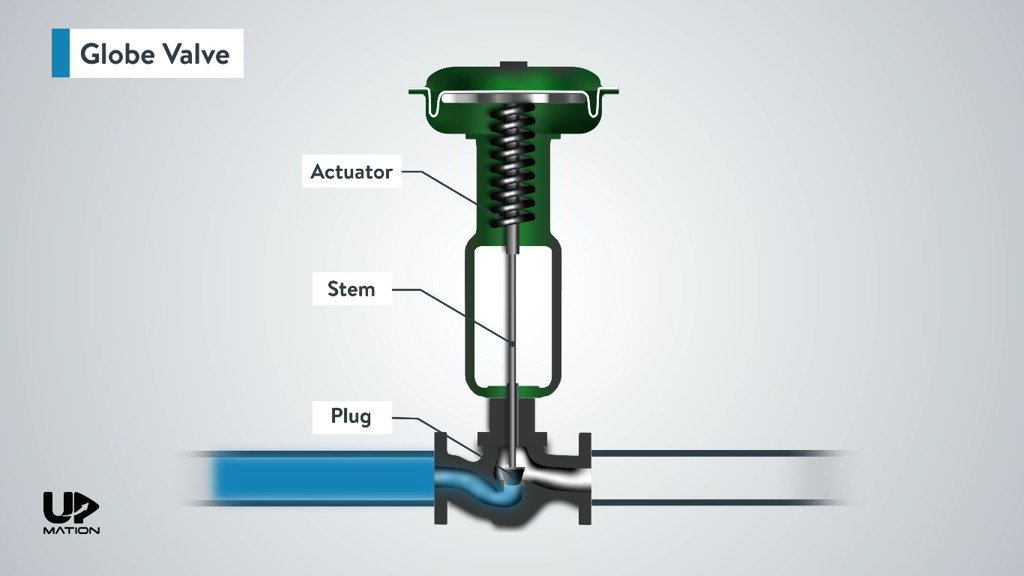Reliable Control Valves: Trick Parts for Reliable System Administration
Reliable Control Valves: Trick Parts for Reliable System Administration
Blog Article

Maximize Energy Savings and Convenience With Advanced Building Automation Controls
In the world of contemporary style and facility administration, the integration of sophisticated structure automation controls stands as a critical innovation. By taking advantage of the power of automation, buildings can adapt, respond, and develop in methods that were when unbelievable.
Energy Effectiveness Advantages
Energy effectiveness benefits can considerably reduce power usage and operational expenses in buildings. Energy-efficient systems, such as innovative structure automation controls, can maximize the use of sources like illumination, heating, and air conditioning, leading to lower energy expenses over time.
In addition, enhanced energy performance can prolong the life-span of building equipment and systems. By operating much more successfully, HVAC systems, lighting fixture, and other building elements experience much less damage, leading to lowered maintenance and substitute prices. Additionally, energy-efficient structures commonly regulate greater residential or commercial property worths and rental rates, supplying lasting financial advantages to owners.
Moreover, power performance can improve resident comfort and performance. Correctly controlled indoor environments with optimum lighting and thermal problems produce an even more pleasant and helpful work area, resulting in boosted staff member satisfaction and performance. In general, the energy effectiveness advantages related to sophisticated structure automation controls are complex, including cost financial savings, ecological stewardship, and passenger well-being.
Boosted Convenience Control
Enhancing convenience control in structure settings calls for an innovative assimilation of innovative automation systems for ideal occupant health. By making use of innovative building automation controls, centers can tailor the interior setting to satisfy the particular requirements and choices of passengers. These systems make it possible for specific policy of ventilation, illumination, and temperature, producing a comfy and productive ambience. Resident fulfillment and performance are carefully connected to thermal convenience, making it important to have systems in place that can adapt to transforming problems in real-time.
By including these innovative controls, structures can not just enhance comfort but also improve power performance by maximizing system procedures based on real tenancy and usage patterns. Ultimately, prioritizing passenger comfort via sophisticated automation systems leads to an extra enjoyable and healthier interior environment.
Functional Effectiveness Improvements

Moreover, the implementation of real-time surveillance and analytics devices makes it possible for structure operators our website to determine power ineffectiveness and functional anomalies promptly. By continually keeping track of power usage patterns and system efficiency metrics, modifications can be made in real-time to optimize energy usage and make certain peak functional performance. control valves. In addition, including need response approaches into structure automation controls can better improve operational effectiveness by dynamically readjusting power usage based upon grid problems and prices signals
Indoor Climate Optimization
Efficient indoor climate optimization is a fundamental aspect of structure automation controls, guaranteeing owners' convenience and health while maximizing power financial savings. By using innovative sensing units and controls, developing automation systems can continuously adjust and monitor temperature level, moisture degrees, air high quality, and air flow to create an ideal interior atmosphere. Keeping find here comfy and consistent problems not only enhances occupant satisfaction however also boosts performance and total wellness.
Indoor climate optimization additionally plays a critical duty in energy effectiveness. By fine-tuning home heating, air conditioning, and air flow systems based upon real-time information and occupancy patterns, developing automation controls can substantially reduce power usage - control valves. For example, implementing approaches such as demand-controlled ventilation and thermal zoning can assist minimize power waste while making sure that each area of the structure gets the needed conditioning.

Lasting Atmosphere Creation
Structure automation controls not just optimize indoor environment conditions for power effectiveness and owner comfort however also lay the foundation for developing a lasting environment through strategic administration of resources and systems. By integrating advanced building automation modern technologies, such as sensors, actuators, and smart software, centers can change and monitor energy use in real-time to decrease waste and minimize their carbon impact. These systems make it possible for anticipating maintenance, determining potential issues before they rise and enhancing tools performance to improve durability and efficiency.
Additionally, lasting atmosphere development expands past power management to incorporate water preservation, waste reduction, and interior air quality improvement. Structure automation controls can regulate water usage, identify leaks, and make sure correct garbage disposal methods, contributing to total sustainability efforts. Additionally, by keeping track of and managing investigate this site ventilation and filtering systems, these innovations enhance resident wellness and productivity while lowering power usage connected with heating and cooling procedures.
Final Thought
To conclude, advanced building automation controls deal considerable benefits in terms of power cost savings, comfort control, functional effectiveness, interior climate optimization, and producing a sustainable environment. By executing these controls, structures can achieve optimal performance while lowering power consumption and improving passenger convenience. It appears that making use of sophisticated automation innovation is vital in boosting building efficiency and developing a more sustainable future.
Energy effectiveness benefits can dramatically decrease energy usage and functional prices in buildings. Generally, the power efficiency advantages connected with advanced building automation controls are multifaceted, including price savings, ecological stewardship, and owner wellness.
Furthermore, integrating demand response strategies right into building automation controls can further boost functional effectiveness by dynamically readjusting energy usage based on grid conditions and pricing signals.
Structure automation manages not only maximize indoor climate conditions for power effectiveness and owner comfort however additionally lay the structure for developing a sustainable atmosphere through strategic monitoring of resources and systems.In conclusion, progressed structure automation manages offer considerable benefits in terms of power financial savings, convenience control, operational performance, interior environment optimization, and creating a sustainable environment.
Report this page